Exposition: I’ve had these doodles sitting around and I have even taken the time to color them to some extent, but they don’t really stand as anything on their own. So…doodle dump.















Ramblings and webcomics from LeEMS

Exposition: I’ve had these doodles sitting around and I have even taken the time to color them to some extent, but they don’t really stand as anything on their own. So…doodle dump.















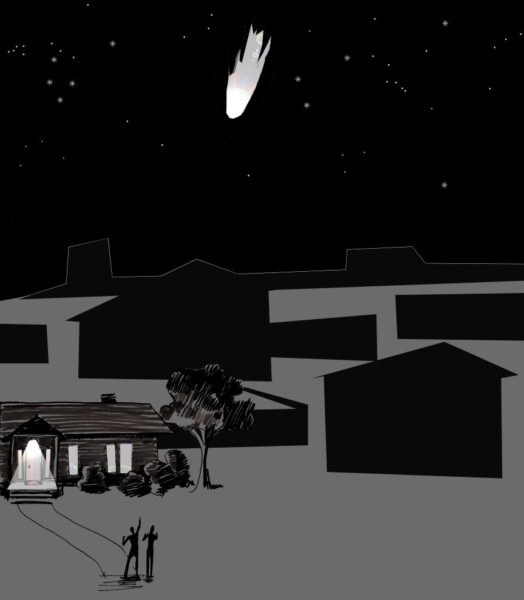
I was honored to due some artwork for the new album by Caduceus: Acceleration Due to Gravity. You can find it on Bandcamp.
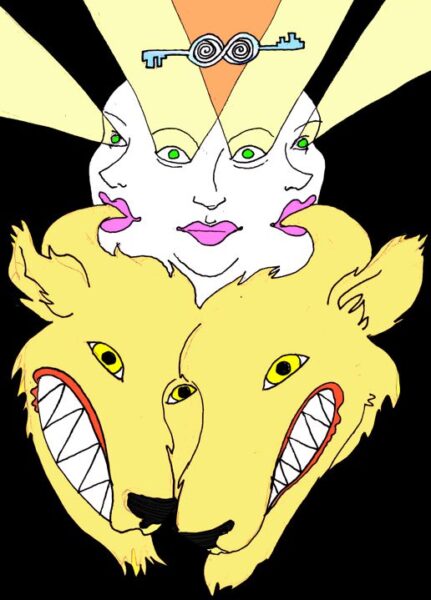
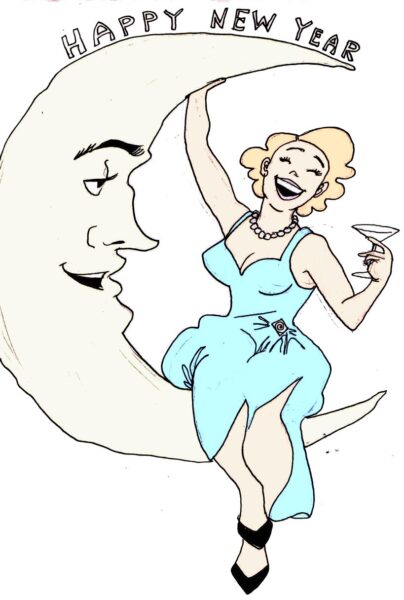
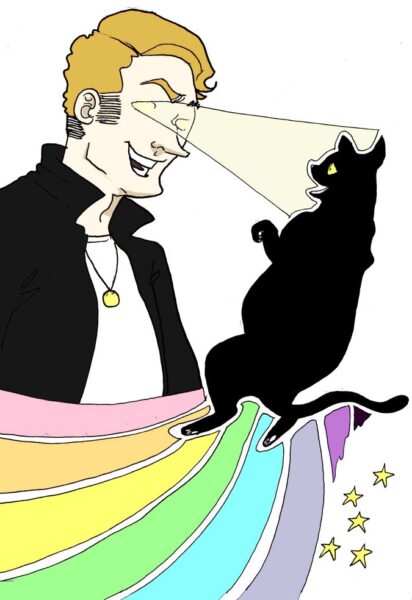
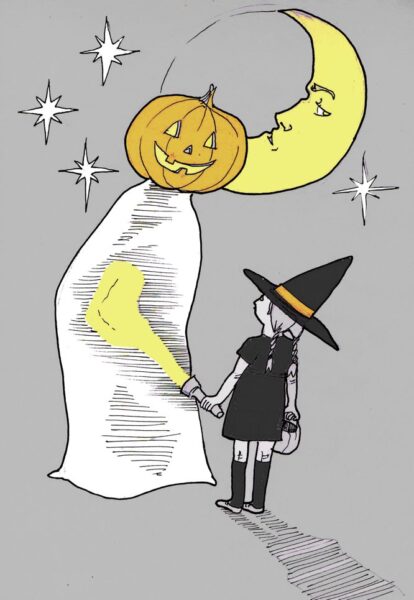

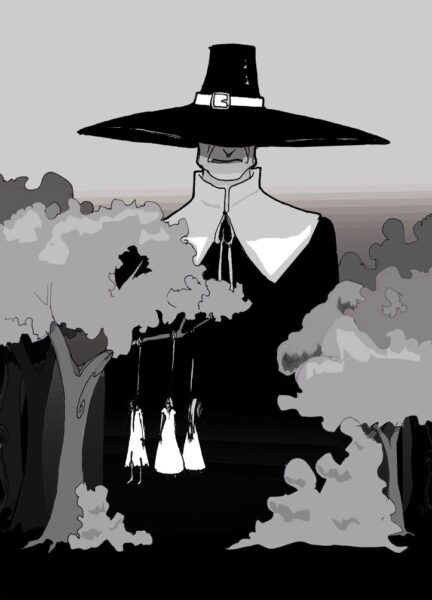
I don’t know about you, but my professional life has been filled with discussions on AI generated text and art. The release of and growing proliferation of AI generated and assisted work has people asking many questions about originality, copyright, ethics, plagiarism, and more. I am discussing none of that here.
Instead, I decided to play with one of the AI art generators – an artificial intelligence program trained to create artwork based on a text prompt by synthesizing or learning from a collection of ‘training material’ gathered from various sources. Taking inspiration from one of my most popular posts to date, I wondered if Dall-E could give me a rendition of Spirited Horses that would’ve been compelling in similarity to Henri LeRoy’s had it been a contemporary of that work.
That most popular post is “Chromolithography and the Mystery of Henri and Anita LeRoy,” wherein I attempted to figure out the true authorship of a picture that I inherited from my grandmother, finding out all about chromolithography along the way. If you need a reminder, the first picture in the following gallery is what is often called ‘Spirited Horses’ with the signature of LeRoy. From what I was able to find out, the following two may have been issued as some kind of collect-all-three deal. The final picture is pretty darn similar in my opinion, issued by another chromolithographic company, Prang Co.
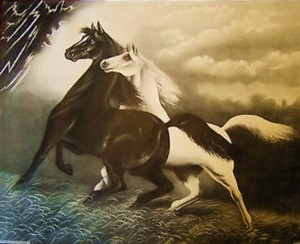
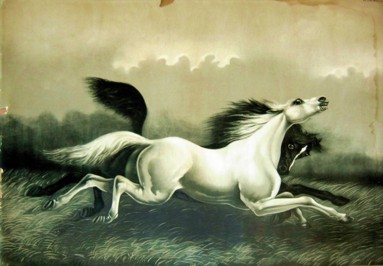
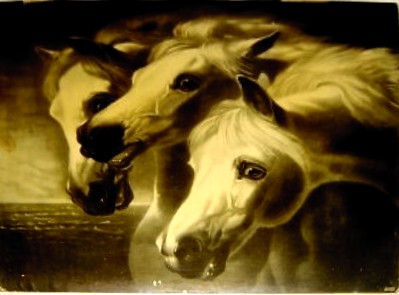
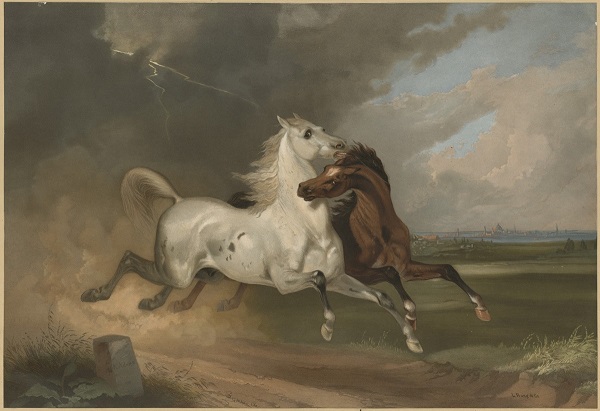
Well, I tried a couple prompts with Dall-E. The first try: “spirited horses in the style of a Victorian chromolithography,” said to me that the AI didn’t really know what I meant by chromolithographic style. Chromolithography was more a technique, but as a technique rooted very firmly to one main time period, I think they did have a look about them. A look that these four results did not capture.
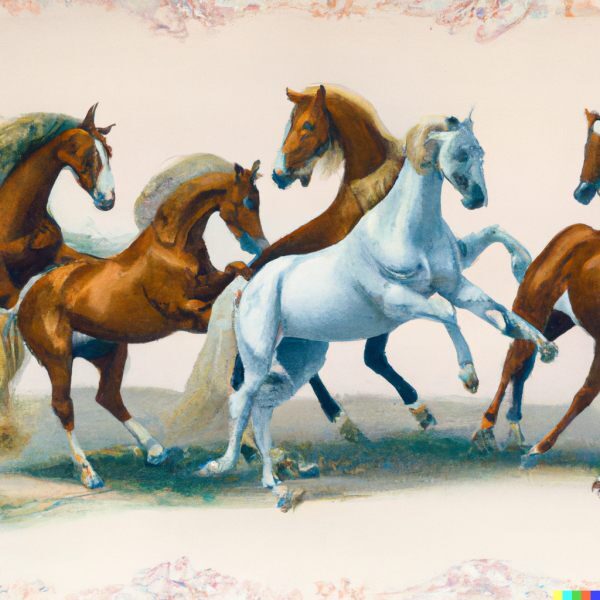
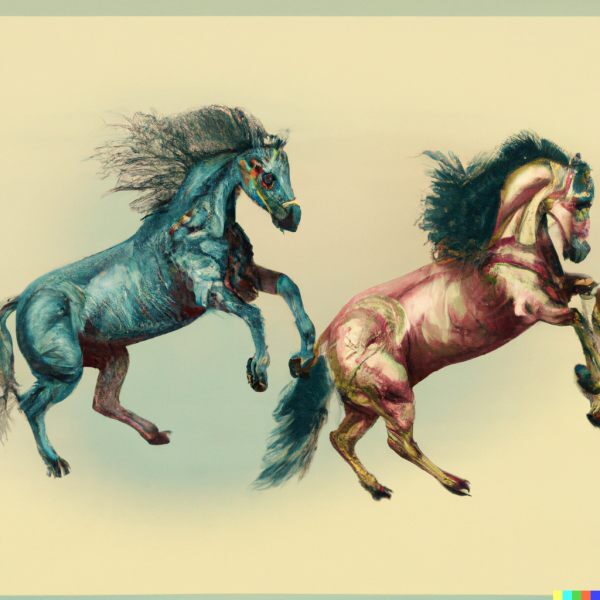
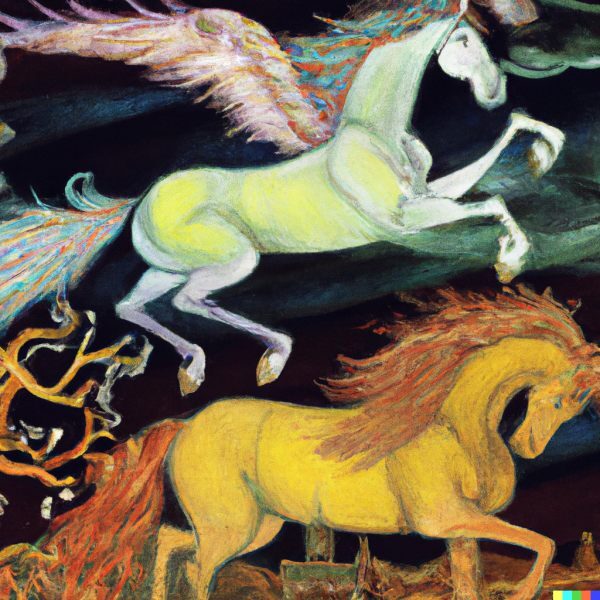
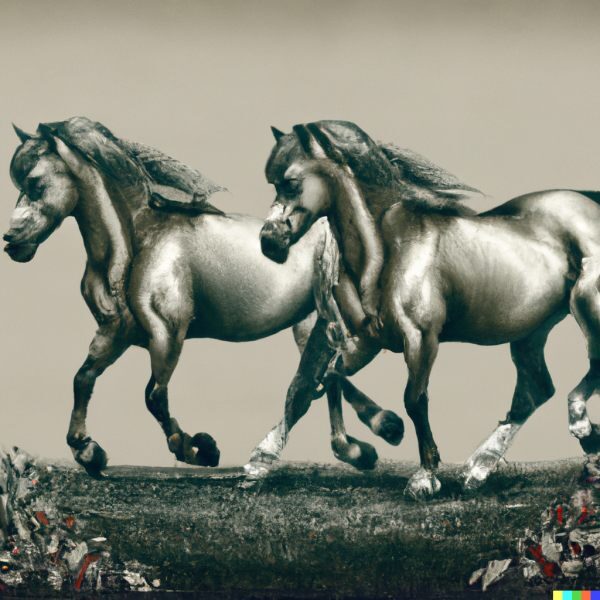
I picked the last one, the one I thought most like my ‘Spirited horses’ and had the AI generate a few variations. The variations went to weird places.
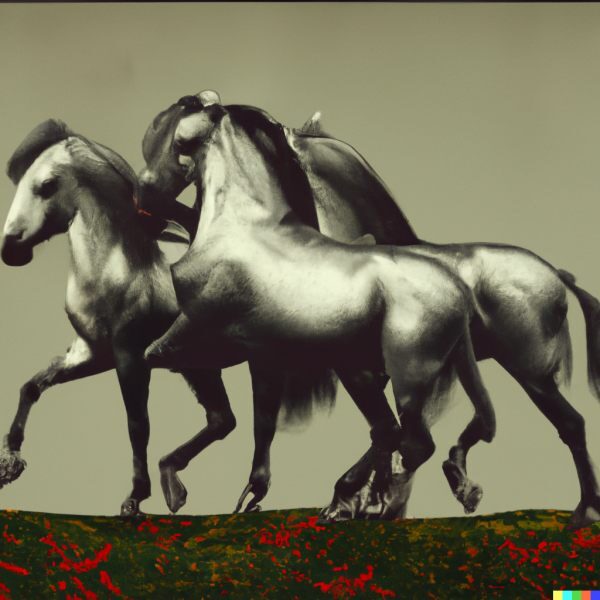
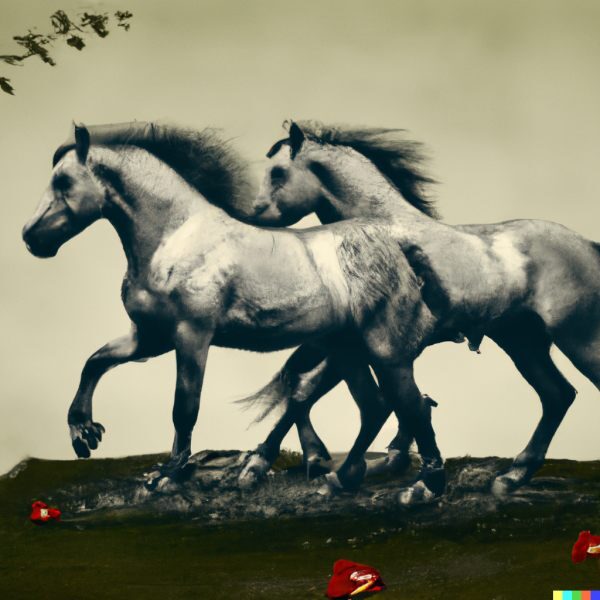
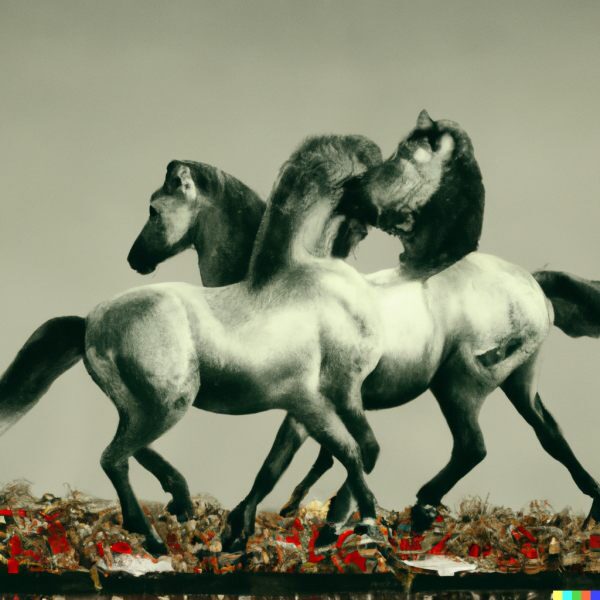
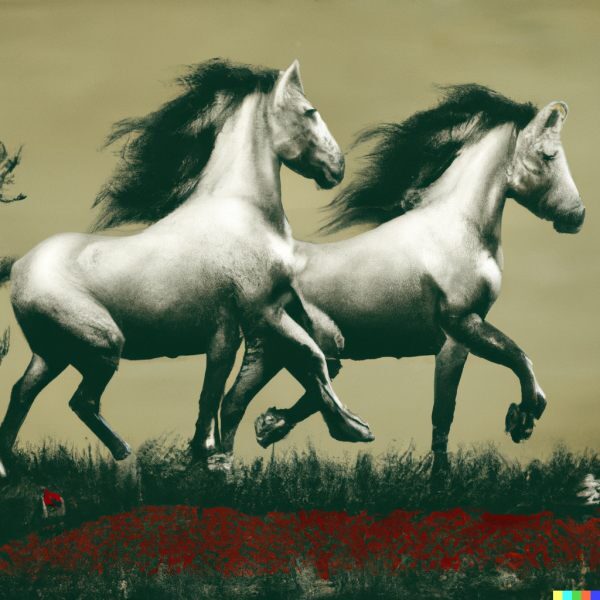
For my next prompt I kept with the chromolithography word and tried: “chromolithography of horses running from a storm.” A couple of the examples here reminded me of the Prang, Co. image.
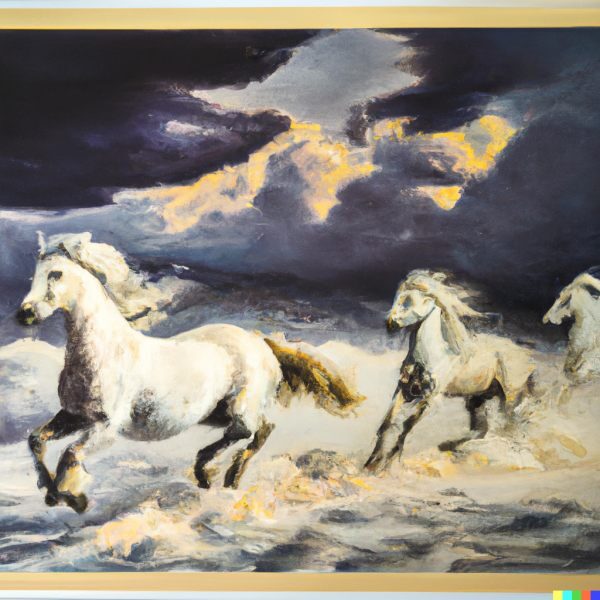
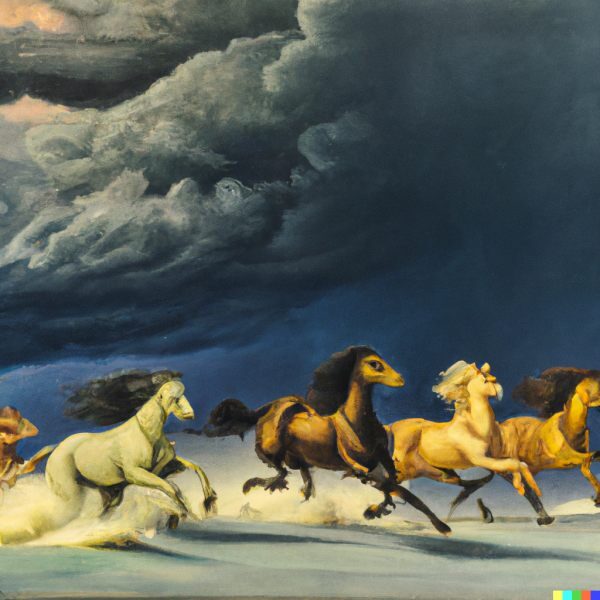
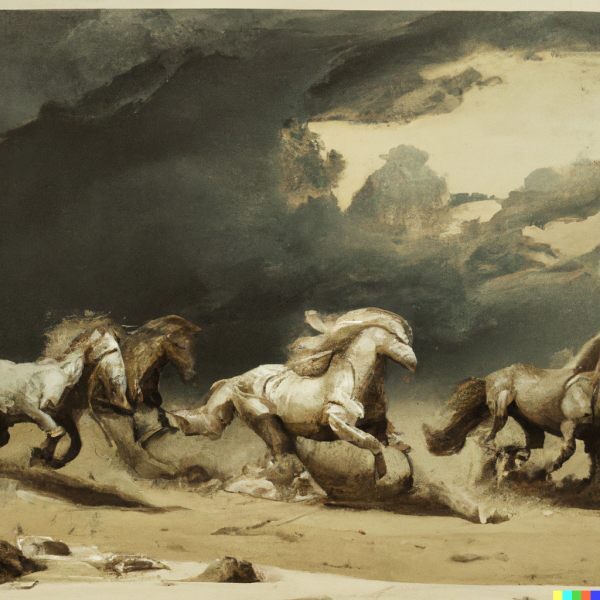
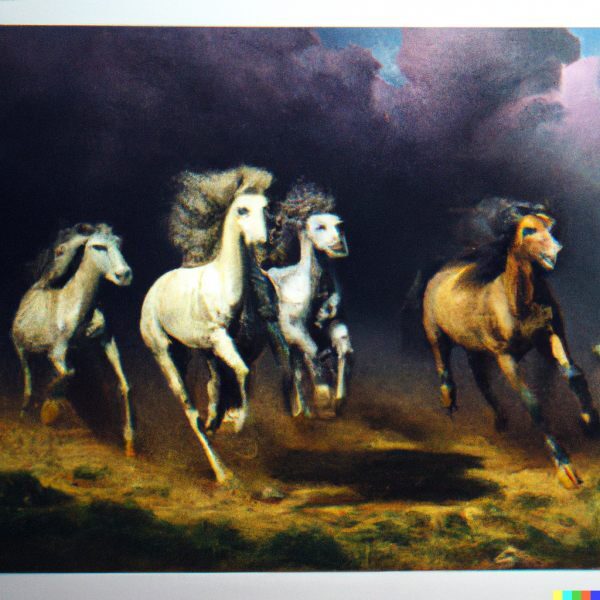
So I tried variations on the last one again.
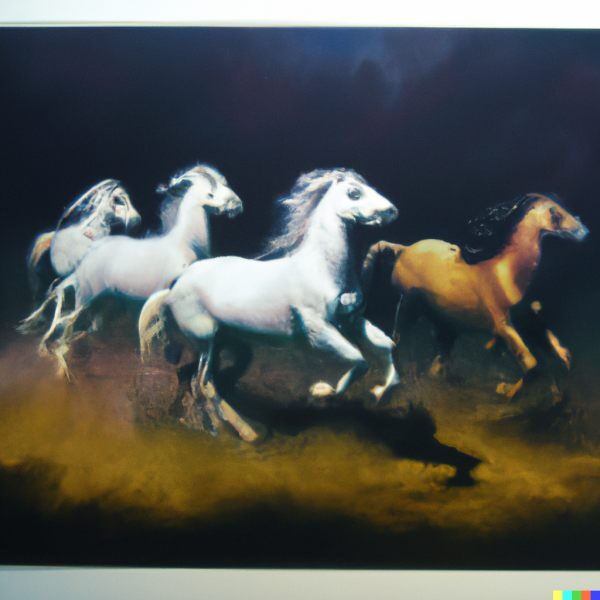
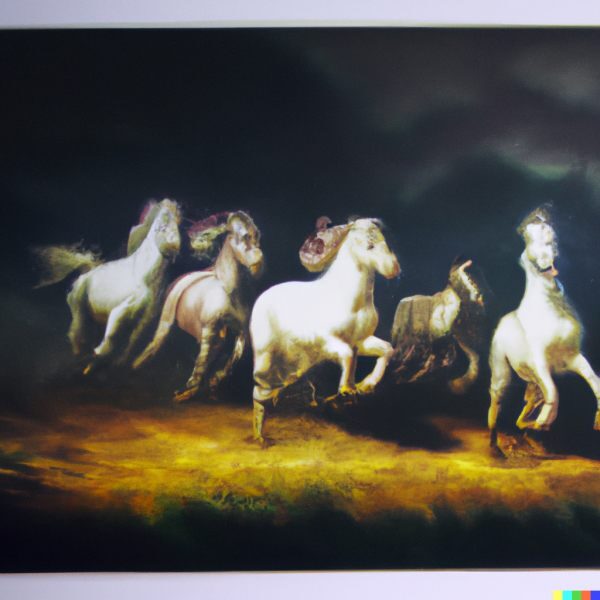
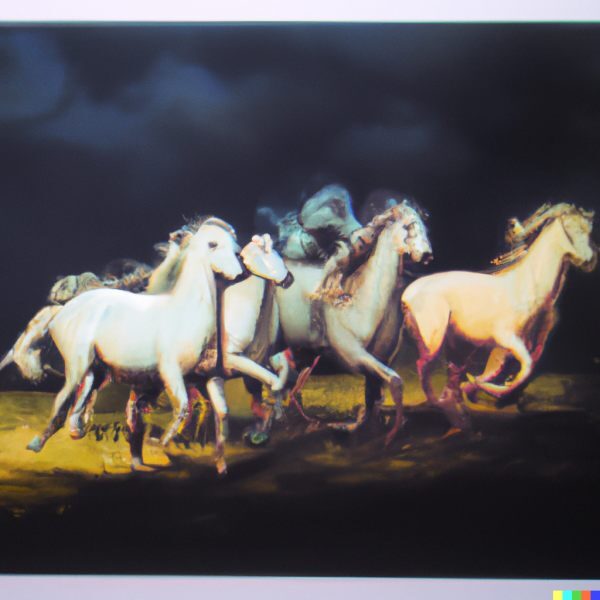
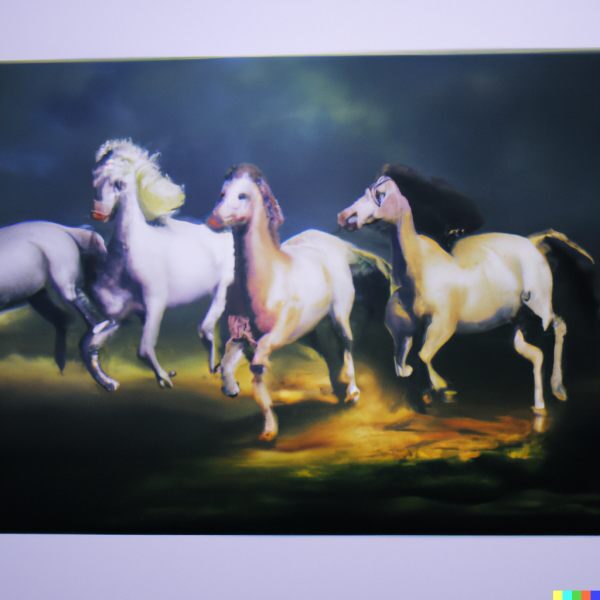
Overall the experiment was interesting. I can see that the text prompt I give is of supreme importance. So, I tried ‘painting of two horses, one black and one white, with the black horse in the foreground, running from lightning.’ The results were different than the two previous tests but not any more ground breakingly similar to the chromolithographic prints I had studied previously.
Was I trying to get something that looked like an existing picture? Maybe. I’m not sure really. Knowing that the AI is trained on existing images from other artists has led many to worry that the images that result are copies, infringing on other artists rights. Of course each art AI I have played with is obviously trained on different images. If Henri LeRoy’s original Spirited Horses was in the training set, would I have gotten a more similar result from the AI? My playing around isn’t really meant to answer those questions. There are researchers trying to do this exactly: get a generated image that obviously infringes on one of its training images.
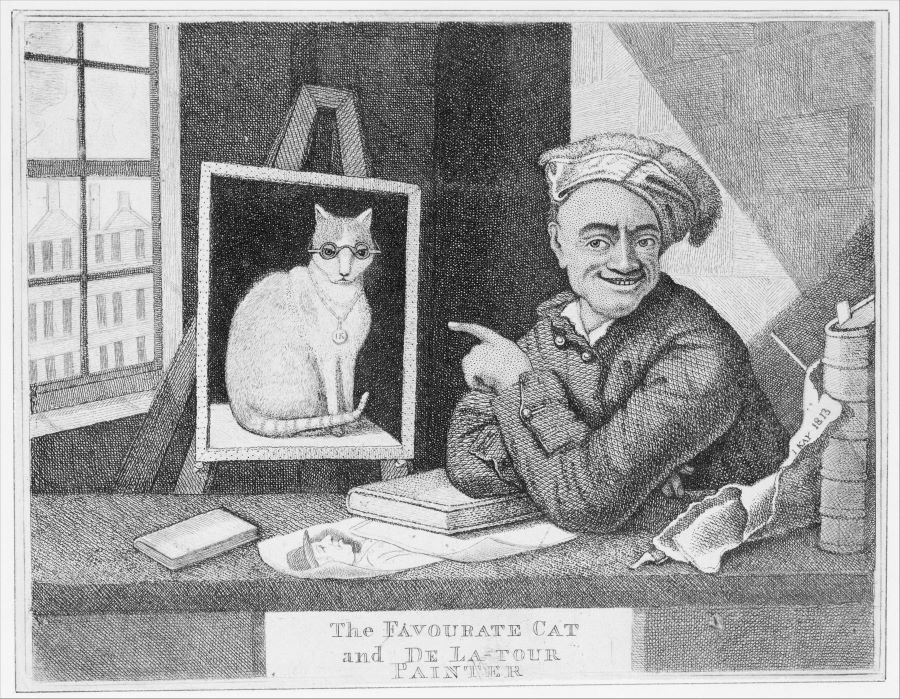
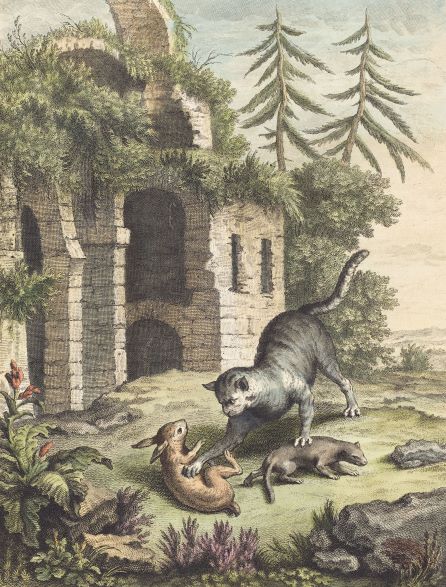

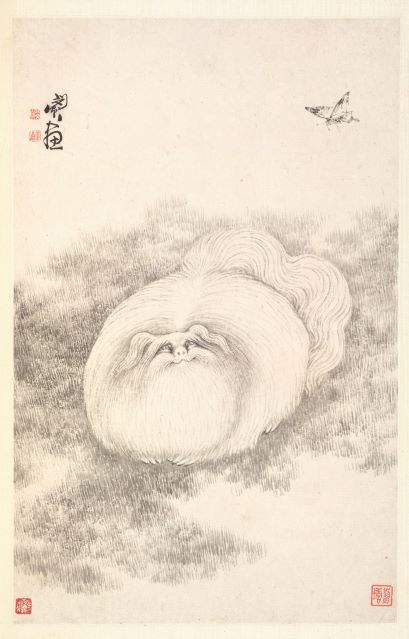
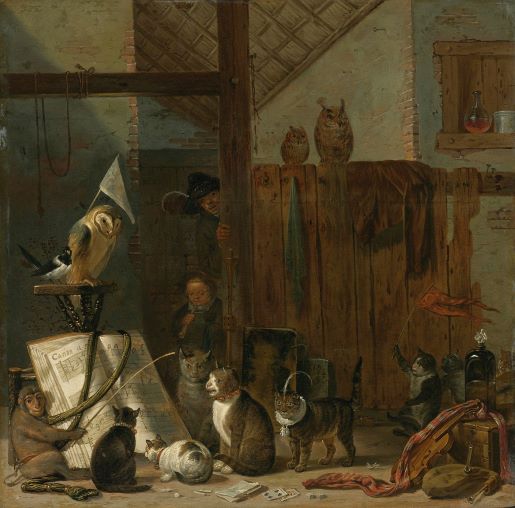
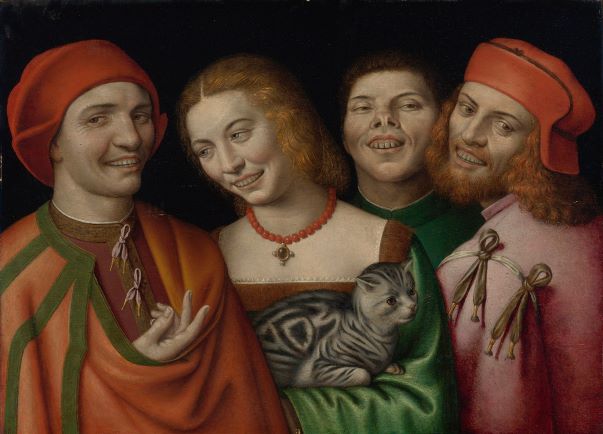
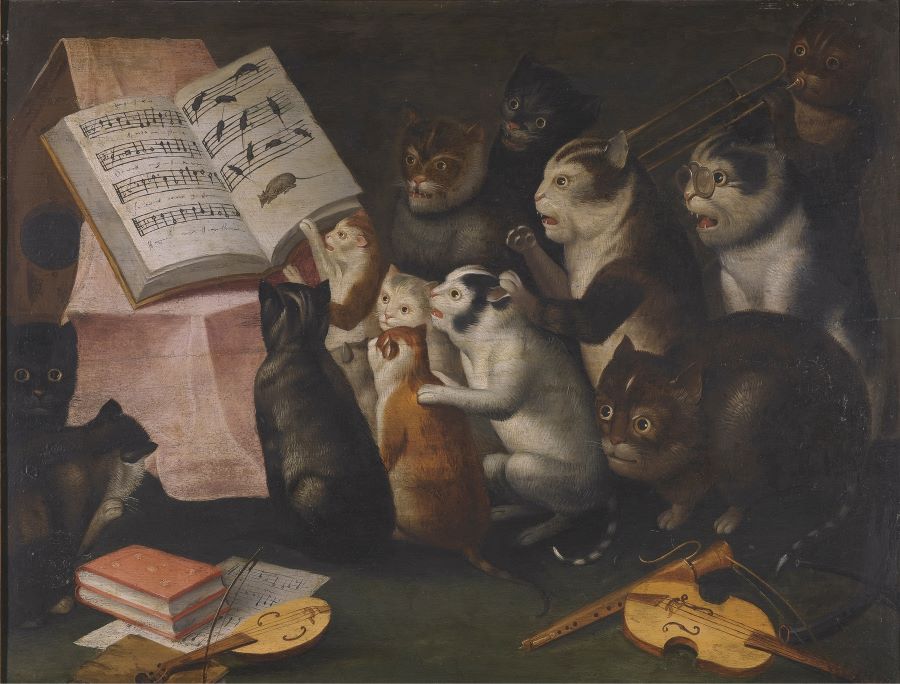
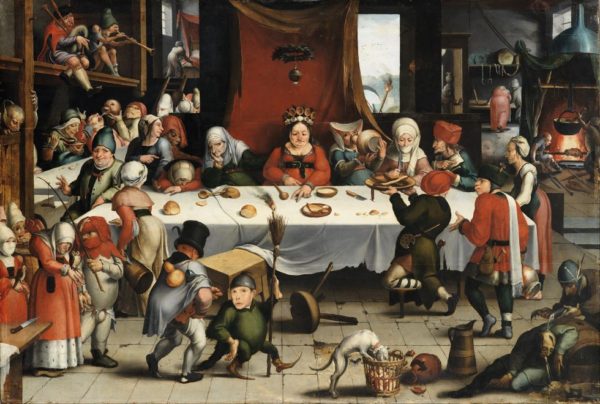
You see before you a picture that seems to be depicting a wedding feast. I say seems to be, because the title of the picture doesn’t say anything about a wedding. But, the order of those seated, the unhappy lady in the center, in front of a red cloth, wearing a crown with a wreath over her head are all reminiscent of other pictures from the same period that showed wedding feasts. This is ‘Burlesque Feast’ by Frans Verbeeck. This picture pulls you in and drags you down. It conjures up torrents of questions that seasoned art historians may be able to answer quickly, but maybe even the experts wouldn’t know. Allow me to show you around…
First, a little background. Frans Verbeeck (1510-1570) came from a family of important artists in Mechelen, in the province of Antwerp in the Flemish Region of Belgium. According to Wikipedia it is not always possible to attribute work to one or another of the Verbeeck family, but at least three paintings have been attributed specifically to Frans Verbeeck who lived in the middle of the 16th century.
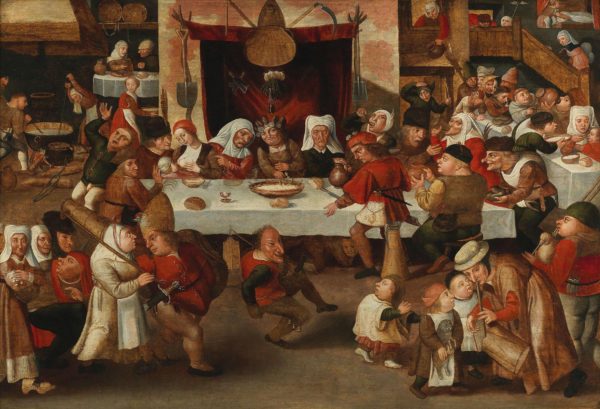
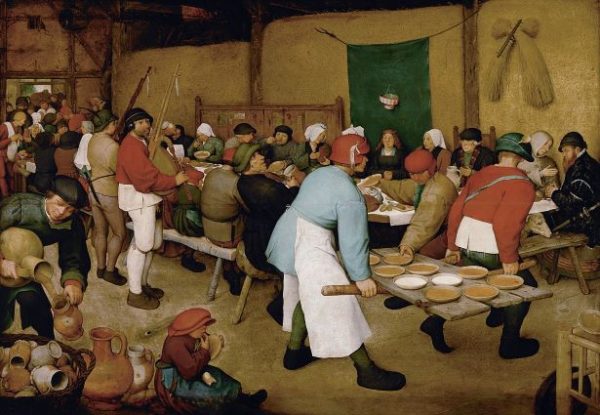
Burlesque Feast is not Frans Verbeeck’s most noted work. I found much more attention paid to The Mocking of Human Follies, and there is another feast picture attributed to Frans Verbeeck called ‘Peasant Wedding’ that looks very similar in composition albeit less strange. It is almost like ‘Burlesque Feast’ is making fun of ‘Peasant Wedding.’ And Verbeeck’s ‘Peasant Wedding’ in turn, almost seems to be making fun of Bruegel the Elder’s ‘Peasant Wedding’.
Plenty of analysis has gone into Bruegel the Elder’s ‘Peasant Wedding’ that can help us figure out what is going on in the other two pictures, even though the customs are unknown to us. For instance, the lady sitting in front of the green cloth, wearing a crown with a ‘crown’ suspended over her head is the bride. So, the characters similarly positioned in Verbeeck’s ‘Peasant Wedding’ and also in ‘Burlesque Feast’ are also brides, or playing the part of one.
Back to ‘Burlesque Feast.’ Go ahead and open the link to the large image on Wikimedia commons and get deep in there. Do you notice how the bride in front of the red cloth, wearing a crown that appears to be made of spoons and broken egg shells, under a wreath that hangs from the ceiling, looks so utterly unhappy? Maybe she looks so sad because her groom is the fellow in the bottom right retching into the corner? But her emotional state and his apparent drunkenness are nothing compared to other things happening in the picture.
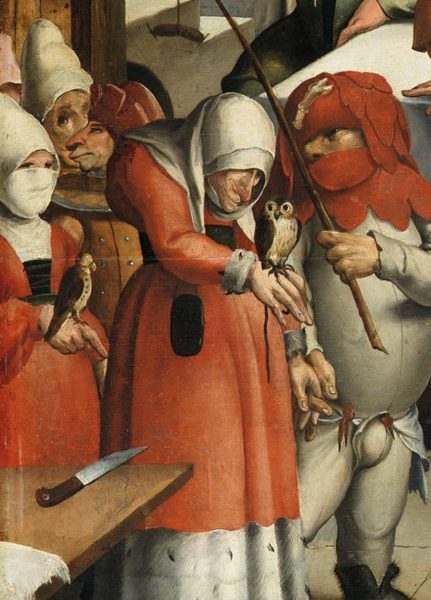
Coming in on the bottom left of the picture we see a procession of hooded figures seemingly lead by an elderly lady. From the ermine trim on her clothes and the owl on her hand – as well as the falcon on the hand of the lady behind her – I am guessing that these are quite well-to-do individuals. Falconry being a past-time of the rich. Perhaps these are the wealthy members of the town coming to give their blessing to the unhappy bride? But, look how odd and hunched the old lady is. Why is she so crooked. And why is there an unsheathed knife pointed at her on the table to her side? In Dutch still life painting, a popular art of the same time, a knife left carelessly on the table is a sign of betrayal. Is the old wealthy lady betrayed or the betrayer?
Owls in the middle ages were alternately seen as symbols of the devil or classically as representations of wisdom. Which could it be here?
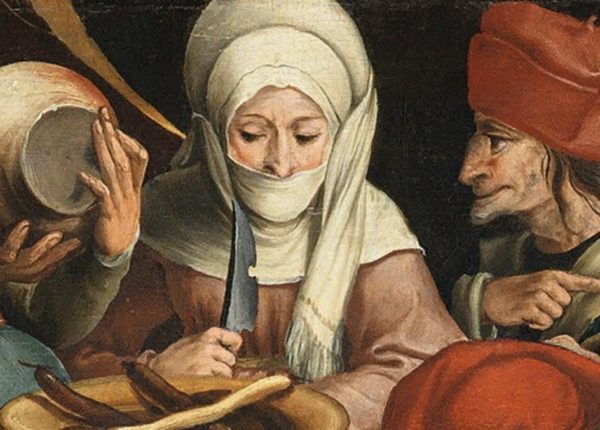
This lady, to the right of the bride (from our view), why does she look as though she is psyching herself up to stab a body? Is it the man who leans closely in to talk with her that has pushed her to this point of anger or the woman chugging from a jug on her other side? Or, is it just that she is dismayed her knife has a big ole’ nick out of the blade?
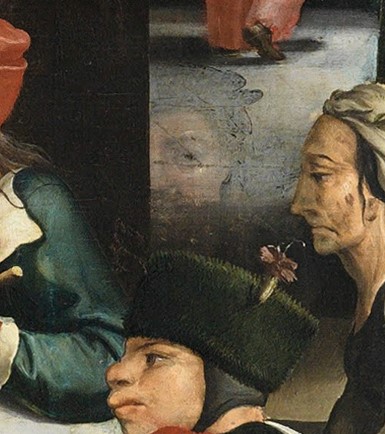
And further right, on the other side of the man that leans in closely, is a ghostly image of a man who is not there. He stares directly at the audience and is, in fact one of only two characters in this whole picture that do engage with the audience directly. Is this a mistake of the digitization process, or the painting actually have this ghostly image in it? If in the painting, it seems oddly deliberate. I know many paintings were painted on top of previous compositions, but this doesn’t look like an under-layer peeking through to me. If anything, it looks like the impression you might get if you had two printouts face to face in a folder for too long and a little of one gets stuck onto the other.
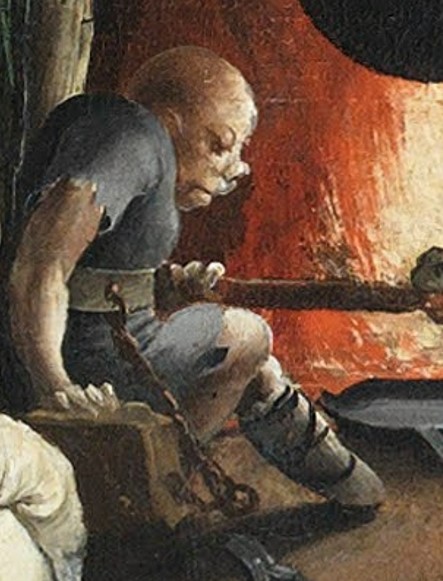
Further back in the room on the right side of the painting, a bald creature with a pig like nose tends a spit that cooks a cow head over the fire. That could be odd enough on its own, but as I looked at the figure, trying to see if he was missing a foot or it was just turned to the side (I vote for turned), I noticed that he is chained to a block. Slavery was present in Europe in the middle ages and there were also some interesting punishment devices, so is this creature enslaved or is it being punished?
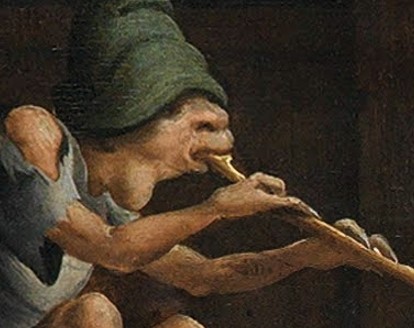
His is not the only face that is more creature-like than human-like. Up in the left hand corner, among other musicians playing for the feast is a flute player who looks, to me, like a lizard with a goiter. At first I was thinking that classifying some of the characters of the picture as creatures was a little harsh, but a closer look at the lizard like flute player reveals that he only has to fingers on each hand.
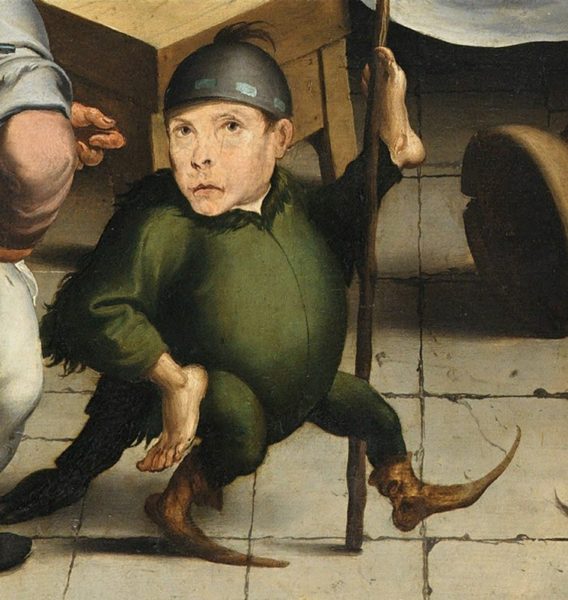
And finally, the most obvious but easy to overlook creature is front and center, across the table from the bride and the second character who engages us directly, or maybe the first. He has feet for hands, and, perhaps, a tail? I could also mention that he brandishes an upturned broom that holds a lit candle – something that is not safe in the least – but why dwell on that when he has feet for hands?
When I started looking at the other wedding pictures, I did notice in Verbeek’s ‘Peasant Wedding’ this spot in the picture is taken by a small jester-like human character. This is really what got me thinking that ‘Burlesque Feast’ was poking fun at ‘Peasant Wedding.’ The more I looked at Verbeek’s ‘Peasant Wedding’ I wondered if it was poking fun at Bruegel the Elder’s ‘Peasant Wedding.’ Bruegel’s picture was dated to 1567. I could not find if Verbeek’s pictures had been dated, but Verbeek and Bruegel were contemporaries, so I imagine some painterly teasing is possible.

This is another piece that I drew to someone else’s specifications (though they didn’t know it until they got it for Christmas). Long ago I thought I would hate to be an artist for hire and avoided all requests for drawing, but I find drawing something out of my norm to be very invigorating. Granted, my most recent experiences did not involve negotiated changes to the art. This is something I saw in my Father’s industry that steered me away from an art career of any kind.
Anyway, the picture is of Tyra Banks’ character Nora in Halloween Resurrection (wiki) enjoying a latte while her coworker is murdered on a screen just outside her eye-line. I had to composite a few different angles from the movie as the two images do not appear quite like I needed them to in the movie as I’ve seen it.
I missed the last year or two of celebrating the Bean on its anniversary. We’re getting pretty old here, but I’ve been through so many migrations its a little hard to tell how old. I can say for sure that the Bean, as a blog, was started in December of 2007. Happy 14th birthday, Bean! 2007 is also when theLeEMSmachine.com first came about, giving a really real URL to a website I had build at the old Angelfire free pages in 2002. So, happy 19th to LeEtta’s online persona? Only, I am not sure of the month.
When I migrated to a new internet host and started using WordPress for the Bean in 2010 I lost a lot of the original Bean content. I also decided it was an opportunity to change the way I blog – less consumption, more production, and I think it has worked out rather well. Since 2010 we’ve had over 1,100 posts, mostly drawing, a lot of comics, and, especially lately, a handful of research:
#DRAWLLOWEEN #modernwitchesdaily #witchyartchallenge 24 hour comics day art books challenges characters Christmas comics consumption copyright crafting doodling drawing fabulous ideas gardening halloween history holiday Holidays in Movies inktober language LeEMSmachine Levi Levi librarians movies music NaNoWriMo Octoberfest Penelope Sea projects ranting recipes research shopping site updates stories television the house traveling webcomic witches Wolf and 7 Kids writing
I can’t say I was super productive drawing wise this year, but I have dug up a handful of year in review doodles:









For those of you who sometimes drop in on my comics, like Levi Levi and No Evil, I am still working on those and more. I also have a handful of zine projects ongoing that I will be dedicating more time to. This is starting to sound like a new years resolution post, too. Well, there you have it. Thank you all for stopping by and for hanging in with me! I hope you like what you see most days.
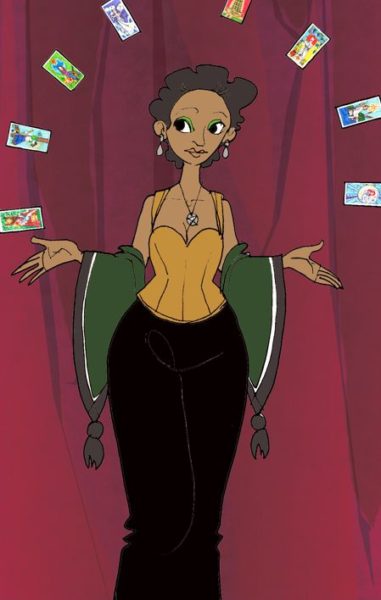
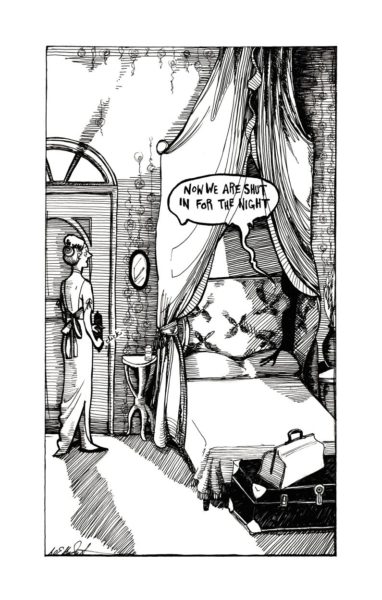
Good friends of mine recently commissioned me to visually render a sentence. I loved the challenge and am quite happy with the result! The sentence came from the beginning section of A School Story by M.R. James: ‘Also there was the lady who, on locking her bedroom door in a strange house, heard a thin voice among the bed-curtains say, ‘Now we’re shut in for the night.’ If you are hankering for a ghost story, then you can listen to A School Story read by Michael Hordern: